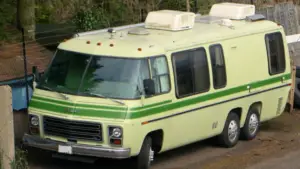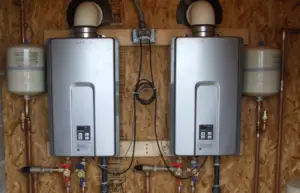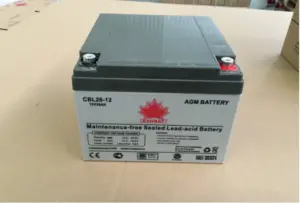As essential as water is to us for our basic needs, it can be a destructive force and wreak havoc if left unchecked. RV’s and Campers are especially at threat from this silent destructor as it can creep into nooks and edges, and continue to erode away the vehicle until drastic repairs are needed.
According to RVIA, more than 11% of US households own an RV, with most being new owners that are unaware of water damage. The good news is, if identified quickly, it can be easily dealt with minimal repairs needed. Here are some quick tips to identify water damage:
Water leaks and interior signs
1. One of the most common ways to find water damage in a home is to follow leaking pipes. Since RVs and Campers are basically homes on wheels, the same rule applies. It is not unusual for RVs to have water leaks; the tricky part is identifying the source. Keep an eye out for any metal parts and items that have rusted, especially if any pipes are nearby.
2. Damp spots on carpets should be looked at as another hint.
3. Rusty stains around windows and lights are a big giveaway that water has found its way into the structure of the vehicle.
4. Discoloration of any sort is another sign of water erosion.
5. Spongy areas on the roof may be an indication of water damage and should be investigated thoroughly.
6. Any indentations of walls are a possible sign of erosion and that the structure has been compromised.
7. All overhead cabinets should be checked for discoloration and soft spots; this indicates water has leaked in through the roof.
8. Some motor homes are known to have leaks around the bed area. Reaching under the mattress and checking for water is a good way of identifying such leaks.
Improper construction
If the vehicle is manufactured using low-grade materials, it may be susceptible to water damage. De-lamination is the main problem that arises in such motorhomes. It happens when water gets in between the exterior fibreglass and sidewall.
One way to detect this is by looking for ripples and bubbles along the wall. It can take up to 5 years or more for a Camper to show signs of bad construction. Discoloration bubbling and indentations are among the tell-tale signs of low-grade production.
Condensation and humidity
Keeping an eye out for the conditions the vehicle is stored and operated in can tell a lot about water damage. Bad temperature management can lead to excess moisture in the vehicle; this may cause mold and corrosion.
If you smell mold or mildew, it is a major sign of bad ventilation practices and prolonged water damage. If the unit has bad airflow and feels damp and humid, it surely will have corrosion due to moisture.
RV, if parked on dirt instead of gravel, then there may be water damage due to dampness. If the windows lack insulation in bad weather, there may be damage because of condensation.
Improper storage or use
If the owner of the vehicle is careless with his property then it is a good indication that no precautions are taken to reduce water damage. Bad parking habits may have caused damage via moisture, it is important to park in the sun where it is driest.
Protection against the elements is important for vehicle health. If the unit is not protected from extreme weather it may have significant rain damage. Checking for water on the roof where there are vents and openings is a good way of checking for damage.
If the exhaust system is not used properly in everyday use, bad temperature management can cause serious damage to the unit.
So to say the least, make sure you store your motorhome or RV properly. Having a big RV like class A motorhome or class C RV needs bigger storage. On the other hand smaller travel trailer or pop up camper can be stored easily.
Flooding
One of the biggest offenders in water damage for RVs and Campers is flooding. It can occur due to a variety of reasons, including aging equipment and common mistakes among others. It is undeniable and sometimes unavoidable that at some point appliances may start to age and malfunction.
Toilets are one of the problem areas that should be inspected regularly, as the flushing mechanism may break causing flooding. Other equipment like water tanks and sinks should be inspected regularly for signs of wear and tear.
Conditions of such appliances are a good indication of the general upkeep and prevention that has been done to stop water damage. Slide rooms should be checked as they are very vulnerable to water damage. Improper maintenance can lead to openings in the gaskets which may allow water to flood into the RV.
Rainstorms can cause flooding into the unit, look for cracks on the roof and creaky windows as signs for water damage.
should you buy RV with water damage
Used RV’s can be bought at much lesser prices due to high depreciation in RV’s. But, you should make the deal after properly inspecting the RV. Water damage can be hard to identify in a camper. Thus make proper inspection before finalizing the deal.
So, buying a RV with water damage should be avoided as it can turn out to be a major problem. It can cost you much more to do the repair. One can also use leak detector to check the leaks in RV.
Water damage can affect ceiling of the RV or walls and even floor. Identifying the initial damage is critical. If unidentified, it can quickly become a major problem. Specially when the camper floor becomes wet, it can take days to dry it properly.
Can insurance cover water damage
This is one question that many RVers want to know. Whether RV water damage can be covered by an insurance policy. Many RV insurance policies would mention about exclusion and water damage could be one of them. There will be policies that do cover the water damage but you need to check with an insurance policy agent.
Conclusion
It is imperative as a motorhome owner to maintain a regular schedule of inspection for your vehicle. The biggest reason for water damage is carelessness and misuse of the unit. Using these tips will ensure the fastest way to tell for signs of damage, getting to the issue as soon as possible thus reducing extensive harm and repair costs.
Proper storage during winter and rain can increase the life of the RV tenfold. It is important to check if the vehicle is properly sealed to withstand such weather. Staining is an obvious sign of water erosion can help in leading to the source of the offense. If any signs of extensive damage are found, it is recommended to seek the help of a professional.




